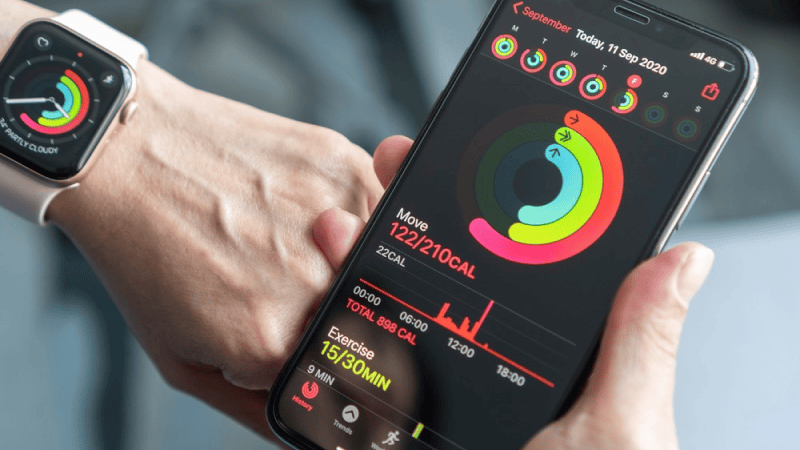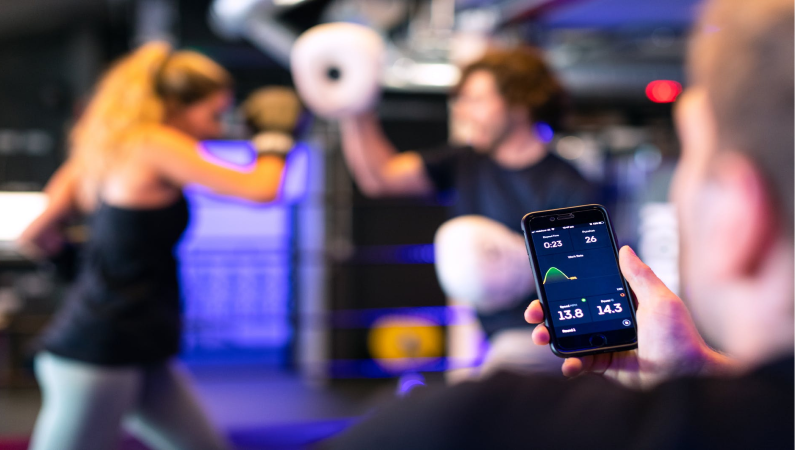Apps and Wearables: Tips On Testing Wearable Fitness App

The market for wearable fitness apps has largely grown with the popularization of healthy lifestyles and sports. Besides the wide range of functions connected with sport and activity tracking, wearable fitness bands provide a great number of other features. They allow people to keep track of their health and quality of life. The development of activity tracking apps requires thorough testing across many different factors and functions using various test strategy types, as well as testing real wearable devices under real-life conditions. Quality testing is the only way to produce a high-quality application that will suit people with different requirements and needs. And it does not only refer to sportspeople. The opportunities and usability of wearable devices go far beyond sports activities. This also refers to a quality of sleep, heart rate, diet control, and many other features.
In this article, we will talk about what is wearable fitness app testing and describe the main tips for QA engineers. And after all, we will understand what makes the activity tracking app successful.
The major challenges for wearable fitness app testing
Unlike regular apps that require mainly software testing, the wearable ecosystem is a bit more complicated because it combines hardware and software. The ingredients of wearables include the following: smartwatches, trackers, companion apps (to be installed and used on the computer or smartphone to sync the data), 3rd party apps, and the actual on-device app.
In addition, the entire essence of the wearable app is about being active, thus, to test the device one can’t just sit in the comfort of one’s home. But rather test the device while being active and also outdoor while practicing some type of activity.
Thus, testing wearable fitness apps requires testers that will have a variety of real wearable devices and smartwatches (e.g. Apple Watch, Fitbit, Garmin, Huawei, Samsung, and Polar). With different smartphones brands, and that are willing to test outdoors under real-life conditions.
The major factors for wearable fitness app testing

Just like many other apps, the wearable app should be tested for functionality, usability, localization, performance, and security testing. However, let’s do a drill-down and take a look at major factors that are more unique for wearable fitness app testing.
Gamification
Having a goal to achieve makes people motivated and encourages them to move on. The activity tracking app should enable users to set the goal for exercises for a day and reward them for completing or introduce penalties if the goal was not achieved. That is made in the form of a game. When a person is eager to complete activity circles and receive the rewards as a part of a game in the app. So the task for a QA team is to check how the function of setting goals/rewards works in the app. As well as provide user feedback about how appealing is the reward.
Geolocation
This function helps track the user’s walking routes, record them, and build new routes, as well as track users’ sports progress during different periods. Fitness tracker app testing is focused on walking/running activities, measuring their lengths, and building new routes for next-level achievements.
Movement tracking
This feature helps to track the overall user’s activity and notify one when he/she has been inactive for too long a time (like sitting at the computer several hours in a row). Those are reminders to get up and move.
User profile
Before the user starts tracking one’s fitness activity, one must enter his/her data. That is age, height, gender, weight, some chronic diseases, etc. Accurate information about a person’s parameters and state of health helps build more correct interaction with the application. So while testing a fitness app, QA engineers should make sure that those functions work correctly and they can customize their account in the app when they need. The user profile also includes plans for further exercises. And also statistics to compare the results with the last day or week, and setting new goals.
User feedback
Of course, the fitness app must be user-friendly, uncomplicated, and perform fast. Since wearable devices like bands are usually small-sized, the buttons must be placed in a convenient order. So that the user can reach any button or function quickly during exercises with no delay and interruption. It also refers to setting timers for exercises sets. While testing a fitness tracker app, the QA engineer’s task is to test if the app works smoothly and responds quickly during intense exercises and if the buttons are placed conveniently.
Battery life is another important thing that must be tested. Wearable app developers must maximize battery life for long workouts and activities. Testers must find suitable criteria to check the battery life in different scenarios, like running, hiking, swimming, cycling, etc.
Connectivity
Another important feature to test is synchronization with your computer or smartphone for data synchronization, and connecting with other different mobile devices. This will allow users to synchronize their devices with the nod of other users. For example, train together and share their results in a group. Training together is always fun, it inspires to set goals and achieve them in the form of competition. In this case, the best way for a fitness tracker test would be crowd testing.
Accuracy
Achieving fitness goals implies using proper metrics for progress. The fitness app should count calories, time, sets, kilometers, steps, stages, etc. When the app owner has understandable metrics and can keep track of his/her activity, heart rate, other health parameters. As well as the number of sets made, distance made, etc., it motivates one to reach the goals and set new objectives.
QA testers should find out if all the crucial parameters are included and if there are no unnecessary metrics that would only overload the app.
Another thing that is highly appreciated in fitness apps is delivering charts of human activity and fitness routine. Also diagrams of sleeping time, kilometers passed, calories burned, indicating the most active periods, and segments of low activity.
Today’s busy lifestyle causes a high level of stress, often resulting in a person does not get sound sleep. A successful wearable fitness app cannot do without a sleep tracker, that identifies sleep phases, periods of active sleep. And also notifies when a person has not enough sleep. Of course, it implies wearing a band while sleeping. When the chart shows not enough time in bed, a person will adjust his (her) discipline and regime to catch up with necessary sleep time for good health.
Another thing that is worth attention is an altimeter. This function measures the stairs climbed and the altitude. Steps tracking is one of the crucial functions of any fitness band. It enables users to check and fix the number of steps done during a certain period. As well as the distance passed.
How can crowd testing be used for testing wearable fitness apps?

Let’s start with user acceptance testing. That is a crucial stage of QA testing, that helps to understand if a product is ready for use. This type of testing is based on the acceptance criteria, which are parameters a QA tester refers to in order to make sure that the app is ready to use. The acceptance testing allows one to look at the application from the point of view of an end-user. And find out if there are any drawbacks to be fixed before the app is released. So QA testers set up an app for all the possible devices and perform different activities like jogging, hiking, swimming, climbing stairs, etc. testing the product across all the functions needed for the end-user.
Since different people enjoy different types of activity, crowd testing is the best option to carry out thorough testing for a fitness app. A large number of testers, from all over the world, with different preferences in sport and different lifestyles and the level of activity will use the app on their wearable devices for a certain period, and this will give the most comprehensive and versatile research of an app that will fit any end-user.
Functional testing is all about ensuring that the fitness app works as the developers intended it to. QA testers use the product on real devices trying how they cope in real-world conditions. This also refers to test case execution where the testers make sure that connectivity, data gathering, and other functions work in real-life conditions. It always comes together with thorough manual testing to reveal troubles that must be fixed before the release.
Unlike some other applications types, in wearable devices testing, you can’t use emulators or simulators for testing. The unique characteristics of the wearable device’s ecosystem make it perfect for manual testing. Real users do it, in many geographies, with real devices, that are willing to practice the required activity for this type of testing.
Final thoughts
The Ubertesters crowdsourced testing service provides thorough testing of applications for wearable devices. Having a large crowd testing team from all around the globe, the company can ensure detailed testing for a fitness app, using all the types of wearable devices compatible with the app, with many types of smartphones. In all possible conditions in real-life, thus providing the best crowd testing practices for fitness trackers.
Fitness app testing requires real human manual work and practicing for testing all the features available on the app. So how to improve fitness tracker? Ubertesters' large community of QA testers adhere to the following tips: personalization, gamification, social sharing, goal setting, tracker of sleep, steps made, food tracker, water tracker, heart rate monitoring, push notifications integration, etc. Fitness product testing requires a comprehensive approach, which is only possible to achieve using crowd testing. The more testers try the product around the world, the more real feedback is received. And you can see the better results.

